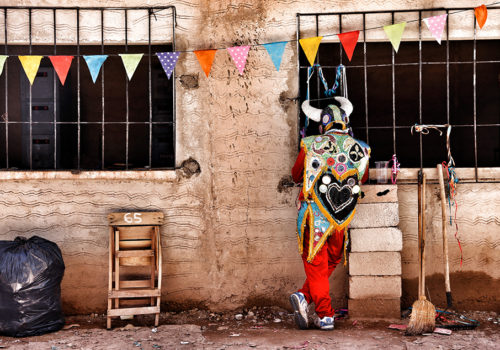According to the Andean worldview, Nature, Man and Pachamama (Mother Earth) live in perpetual relationship as one whole being.
Man as a soul, has life force, and so do plants, animals, mountains, and every form of existence. Since man is part of nature himself, he doesn’t pretend to dominate it. He just exists and coexists as a moment of it.
“La Diablada” is much more than a carnival dance.
As well as including the joy and the offering of a carnival, it has to do with keeping alive an important local tradition and ensuring that the devil costume, that has been present for several generations in the Argentinian Quebrada, continues.
The costumes are inspired by the Andean iconography and the stories our grandparents told us about the mythical character of the devil. Cats, wolves, the serpent, as well as visions, dreams, past and present stories all have a mystical meaning. All of this is part of La Diablada whereby anything and everything goes in the process of creating the costume that each of the devils will display during the eight days and nine nights of the carnival.
Devil is not a costume, it is a feeling. Being devil is a portal, a way to be rid of all the negativity that has been repressed during the whole year. Being part of la diablada and the deep sense of being one with the costume is something that is inherited from generation to generation.
Each year the costume is renewed, as well as the promise to the Pachamama and gratefulness for the received treasures.
The devil invests all of his savings to make the suit and he offers himself. He spends hours and hours sewing in solitude to develop what will be the character that will release him for a time of his preoccupations. It will give him the opportunity to be happy and make others happy.
The revalidation of original culture and ethnic reaffirmation, is currently resurging amongst the Andean peoples as a consequence of the increased awareness of thousands of men and women, who have discovered the cultural treasures left by our ancestors.
Gaby Herbstein
















